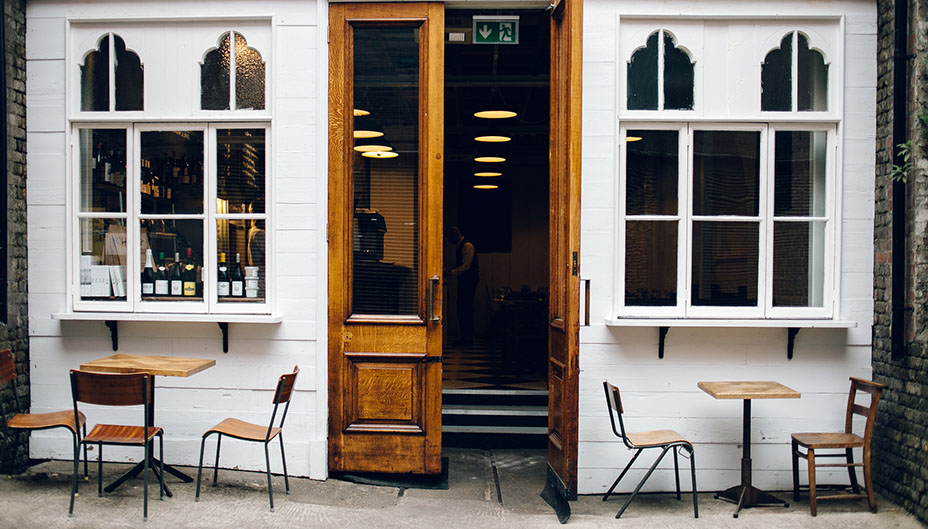Necessity Breeds Creativity: A Look at Pandemic-Era Restaurant Innovation
Written by Sarah Treleaven
Published on September 15, 2020
minute read
Share:
Just a few months before the pandemic swept the globe, Jennifer Nguyen had finally opened the doors on her dream: Péché. Nguyen's vision for this Montreal restaurant was a "social gathering" space, where friends and family could connect over delicious fare or a great drink. And then, suddenly, social gathering became impossible. Nguyen shut down her restaurant and started strategizing how to run her business through the disruption, including converting her menu to affordable takeout options.
This kind of pivot is now familiar to chefs and restaurateurs across the country. Even as reopening efforts continue, challenges abound: When restaurants shut down, suppliers were left with a surplus, says Jenny Companion, who heads up eastern operations at The Fifteen Group, a leading hospitality agency. Now that things are up and running, some suppliers might be offering limited or different options, she says. In addition, amid country-wide health concerns, restaurants work to implement safety measures and struggle with onboarding staff due to wariness about potential COVID-19 exposure. But perhaps the biggest challenge is the uncertainty about whether customers will return and if there will be further disruption down the line.
Necessity often breeds creativity, something many in the restaurant industry have faced head on through the pandemic. Here are just a few of the innovations cooked up by the sector in the past few months.
Touch-Free Menus
With hyper-sanitation the new standard, the comforting feel of a pasta-sauce-speckled menu (the likes of which I often enjoyed at my favourite Italian place) simply does not translate in 2020. To that end, QR codes have replaced physical menus in many eateries, including the bar at Halifax-based Compass Distillers. It was a no-brainer for Graham Collins, president of the craft distillery. "By enabling the customer to view the menu on their smartphone, we avoid the potential contamination issues associated with menus," he says. While Collins doesn't see the change being permanent — some people find it easier to read from a physical menu, he says — he adds that customers have been very receptive to the change.
DIY Kits
While many takeout food options have remained consistently popular, some restaurants are diversifying with a new offering: DIY kits. Pizzerias are pulling together make-your-own-pizza kits with dough, sauce, cheese and other toppings; bakeries are offering kits for home-baked goods like chocolate chip cookies or scones. Just as meal kit subscription services have increased in popularity, these DIY kits offer consumers the convenience of semi-prepared food along with the satisfaction of assembling a meal oneself.
When circumstances made it impossible for chef Jamie MacAulay and his wife Shannon McMullin to operate their Halifax ramen restaurant Water & Bone, they launched Coda Ramen, a meal kit delivery service, out of their dedicated prep kitchen. MacAulay says that it was an easy pivot. "People like putting it together, and ramen breaks down well into its core elements," he says. But MacAulay also looks forward to operating a dining room again, once it's safe — even in a context of growing labour costs, growing food costs, and overall thinner margins. "You miss the people, the clients who built the business."
Euro-Style Market Section
Before Shaun Layton opened Como Taperia, a tapas bar in Vancouver's Mount Pleasant neighbourhood, he visited Spain several times, where he noticed the easy integration of certain grocery items in sit-down restaurants. This idea was in the back of his mind when COVID-19 forced him to reevaluate his business model.
Layton started with "really nice tinned fish" and liquor. It was a hit, and so he added olives, cheese, almonds, paprika, rice and other small goodies from Spain even after the restaurant was allowed to reopen. "We decided to call it Como Mercado," says Layton. Mercado is Spanish for market. "It's another revenue stream, and we'll probably keep it even after the pandemic because it looks really cool. People who come in and who have been to these tiny wine bars-slash-markets in Spain or Italy are like, whoa, this is just like Europe."
Taking Back Takeout
Given the popularity of takeout and delivery during the pandemic, many Canadians have become accustomed to using third-party apps. But they tend to charge restaurants large commissions, which are particularly unwelcome at a time when many are struggling.
In the hope of connecting restaurants directly with consumers, Breaking Bread, a new online platform developed in Vancouver, offers a place where customers can find restaurants across the country that offer delivery or curbside pickup. Additionally, it lists restaurants that are now selling groceries or frozen food.
The founder, Shelley McArthur Everett, says the idea came to her during a sleepless, early pandemic night. "At its core, Breaking Bread is all about helping small and independent restaurants better connect with their customers by letting their guests know what services they are offering as things evolve and how to continue to support them — whether that's through limited dine-in, take-out and delivery, patio seating, grocery or meal kits or more," says Everett. "People aren't just looking for sustenance; everything has to come from the heart."
Ghost Kitchens
Still, while outdoor patios have helped restaurants navigate mask mandates and growing concerns about the relationship between ventilation and transmission of COVID-19, they're not a panacea for carrying expensive rent on indoor dining rooms that might not be permitted to reach full capacity for a while. Enter the "ghost" or "dark" kitchen — essentially, a restaurant without a dining room.
Adam Armeland, CEO and co-founder of Kitchen Hub in Toronto, was planning a turnkey kitchen operation for chefs to prep takeout and delivery long before the pandemic hit — which has proved fortuitous. "Implicitly in our business model, we are a takeout and delivery concept, which is exactly what the government required," he says of the city's springtime mandates. Even once full-capacity dine-in service is permitted, Armeland believes this kind of model will prove durable because customers want options, "whether it's eating something in their car, taking it to the park or sitting at home. We thought it was a concept we were going to grow into, but the pandemic has pushed it along a little faster."
What's Next?
No one can say what's next for this innovative industry, but one thing is for certain: This tough moment has proven just how durable Canadians' commitment to restaurant culture is. "It's amazing how much people say they've missed restaurants," says James Rilett, vice president for central Canada at non-profit Restaurants Canada. "I'm not sure we realized how much they're a part of the fabric of our lives until that was taken away." Like Coda Ramen's MacAulay, most chefs and restaurateurs miss their customers as much as customers miss them.
RBC Direct Investing Inc. and Royal Bank of Canada are separate corporate entities which are affiliated. RBC Direct Investing Inc. is a wholly owned subsidiary of Royal Bank of Canada and is a Member of the Canadian Investment Regulatory Organization and the Canadian Investor Protection Fund. Royal Bank of Canada and certain of its issuers are related to RBC Direct Investing Inc. RBC Direct Investing Inc. does not provide investment advice or recommendations regarding the purchase or sale of any securities. Investors are responsible for their own investment decisions. RBC Direct Investing is a business name used by RBC Direct Investing Inc. ® / ™ Trademark(s) of Royal Bank of Canada. RBC and Royal Bank are registered trademarks of Royal Bank of Canada. Used under licence.
© Royal Bank of Canada 2025.
Any information, opinions or views provided in this document, including hyperlinks to the RBC Direct Investing Inc. website or the websites of its affiliates or third parties, are for your general information only, and are not intended to provide legal, investment, financial, accounting, tax or other professional advice. While information presented is believed to be factual and current, its accuracy is not guaranteed and it should not be regarded as a complete analysis of the subjects discussed. All expressions of opinion reflect the judgment of the author(s) as of the date of publication and are subject to change. No endorsement of any third parties or their advice, opinions, information, products or services is expressly given or implied by RBC Direct Investing Inc. or its affiliates. You should consult with your advisor before taking any action based upon the information contained in this document.
Furthermore, the products, services and securities referred to in this publication are only available in Canada and other jurisdictions where they may be legally offered for sale. Information available on the RBC Direct Investing website is intended for access by residents of Canada only, and should not be accessed from any jurisdiction outside Canada.
Explore More

How Soil Carbon Can Become Canadian Farmers' Next Cash Crop
Sustainable practices may mean untapped profits for Canadian farmers, says RBC Economics and Thought Leadership.
minute read

Hitting Net-Zero Means Rethinking How Canada Grows (and Buys and Eats) Food
Top takeaways from a discussion about the climate challenges and solutions that can be found in farming.
minute read

Diversity in Tech: "I Think This Is the Time," Says Lightspeed CEO
Key takeaways from a conversation on Black representation in a recent episode of Disruptors, an RBC podcast.
minute read
Inspired Investor brings you personal stories, timely information and expert insights to empower your investment decisions. Visit About Us to find out more.







